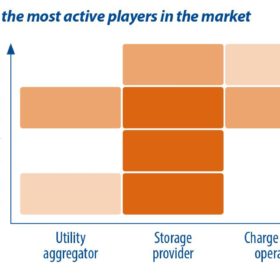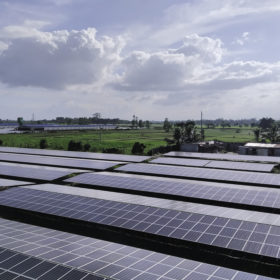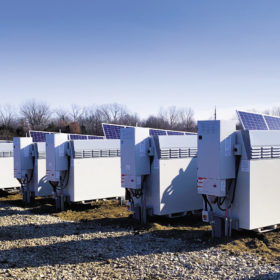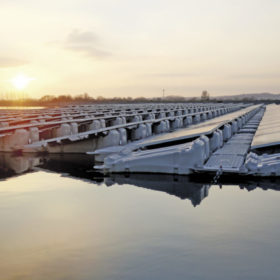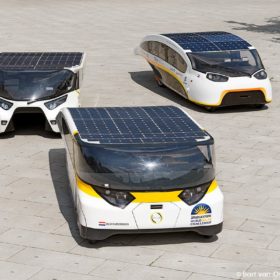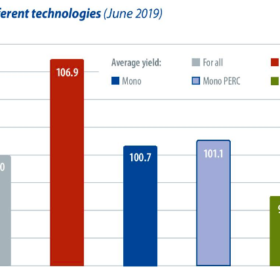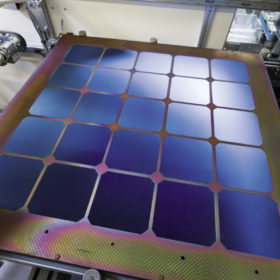The long read: Batteries for batteries
Earlier this summer, Delta-EE completed a new research study on ways to pair energy storage with EV charging infrastructure, across homes, workplaces and vehicle fleets, in addition to bus-charging applications. Robin Adey-Jones, a Delta-EE analyst, presents the report’s findings on the size of the opportunity that EV charging offers for stationary storage batteries.
The long read: Diverse segments drive deployment in Bangladesh
In July, Bangladesh’s renewable generation capacity surpassed the 600 MW milestone. A solid achievement, even though the country still lags behind the government’s official plan to produce 10%, or 2 GW, of its electricity from clean sources by 2020. But with deployment rising in both the commercial rooftop and utility-scale solar segments, development could be poised to accelerate.
The long read: Flow batteries scale up to GW production
Plans for a gigawatt factory in Saudi Arabia, bullet-proof warranties and an international vanadium rental service are propelling a new generation of batteries into the energy storage big league. Pioneers of redox flow technology claim that they can put an end to the degradation and safety issues afflicting lithium-ion batteries. They also expect imminent economies of scale to reduce the cost of bulk energy storage and unlock new markets for solar power.
The long read: Floating PV – niche market or transformative disruptor?
Why on earth would you want to install PV on water? There seem to be plenty of safer sites for solar PV on solid ground or stable rooftops. Nicolas Choleur of Everoze highlights the key requirements for the bankability of floating PV, right through the project life cycle, from development to dismantling.
SuryaKranti Solar Challenge will forge deeper links between industry and academia
The goal of the ‘SuryaKranti Solar Challenge’ is to develop a deeper collaboration between Indian industry and its engineering colleges. The event, on the lines of World Solar Challenge-Australia, aims to drive the culture of innovation in India by trying to solve a great challenge of climate change: building a sun powered car and driving it for a significant distance.
Solar irrigation product converts sunlight directly into motion
The invention converts energy produced by PV cells directly into mechanical motion without batteries or power electronics. Its developers claim the solar motor can drive irrigation water pumps and ventilation turbines for more than 20 years without maintenance.
The long read: Floating PV to rise to GW scale in India
Tenders have begun to drive next-generation solar and storage applications in India. And as developers, administrators and asset owners become more familiar with the technology, the advantages of PV on water and in battery storage are driving the emergence of a pipeline of projects. Surbhi Singhvi, manager of consulting for Bridge to India, discusses the outlook and challenges for both applications.
There is a need for online solar platforms in India
Most residential customers buy PV systems by obtaining quotes directly from PV installers. However, this can prove time consuming, costly and ineffective. Homeowners need an online quote platform, which offers a seamless buying experience. This can increase solar power awareness among Indian homeowners and help grow the adoption of rooftop solar power in the Indian residential market.
pv magazine test: Latest results
pv magazine test is a cooperative module testing procedure involving pv magazine, CEA and Gsolar. All tests are carried out at Gsolar’s test laboratory in Xi’an, China. CEA supervises them and designed both the indoor and outdoor testing procedures.
The long read: Does ALD live up to assembly line expectations?
As demand for atomic layer deposition equipment spreads among Chinese solar cell manufacturers, experts throughout the industry are sharing their insight on the merits of this emerging manufacturing technology. The numbers they crunch reveal tough competition for incumbent plasma-based deposition techniques. But beyond the hype, does atomic layer deposition truly offer the better deal?
